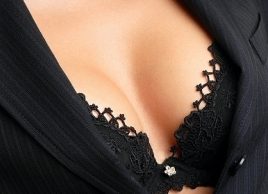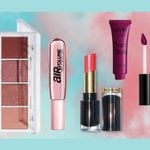Bra shopping: How to find the best bra for you
Clever innovations and softer fabrics are making a super-comfortable bra a reality. Learn how to shop for the right bra for your needs and your body

Source: Best Health Magazine, September 2008
There’s nothing like setting off airport security alarms. Correction. There’s nothing like a security guard circling your breasts with a sensor wand, only to have it beep loudly, with everyone watching.
Journalist Barbara Amiel famously had a similar problem while trying to visit husband Conrad Black in prison. An underwire was the culprit. But the word on bra trends is that plastic is replacing metal more and more. (Next time Amiel won’t have to gnaw away at her bra to make a hole so she can push out the underwire, and I won’t feel like a criminal at the airport.)
Today’s bra technology goes way beyond that, however. Inventions such as a bra that detects breast cancer at a curable stage are not so sci-fi anymore. A Smart Bra, developed by the Centre for Materials Research and Innovation at the University of Bolton in the U.K. last year, uses built-in microwave antennas to generate data about each breast. An alarm alerts the wearer about any potential cancer threat.
In the meantime, in Australia, researchers at the University of Wollongong have designed a fabric with built-in sensors to monitor women’s breast movements when they walk and jog. It’s a promising tool to help bra manufacturers better assess how their designs function.
Despite this, the overall ABCs of bra technology have been more evolutionary than revolutionary. Everyday bra-wearing is more comfortable than ever, thanks to small advances, such as softer, itch-free microfibre laces, and underwires that are flexible, foam-encased and with a flat edge so they don’t twist and turn when you do. Then there are the newest moulded bras, most of which have ditched thick foam pads for ‘spacer cups’ made of a breathable 3-D, double-knit jersey that has an airy bubble-wrap-type centre. These bras, while moulding to fit your bust instead of just covering it like an armour breastplate, weigh about half as much as traditional moulded bras and dry in less than half the time.
Pointers for a perfect bra fit
To determine the number of your bra (whether you are a 34, 36 or 38, for example), wrap a measuring tape tightly around your torso, under your breasts. For cup size, loosely wrap the tape around your torso at the fullest part of the bust. The difference between the two measurements is your cup size: One inch equals one cup size. (So, a one-inch difference is an A, a two-inch is a B, and so on.) But this is only an indication. Says bra-fitting expert Liliana Mann: Measurements don’t take into consideration breast shape, or that left and right breasts can vary by a half a cup to a full cup size.
Follow our, ahem, pointers for a perfect fit:
- ‘ The triangle of your bra should lie flat; if not, either the cup is too small or the band size is too big.
- ‘ Raise your arms. If your breasts slip under the cup, you need a bigger cup.
- ‘ If the underwire pinches under your arms, you need a smaller cup.
- ‘ The back of your bra should be level with the bottom of your breasts. If it is riding up, you need a smaller band or a bigger cup.
- ‘ If the underwire pinches under your arms, you need a smaller cup.
- ‘ If the underwire presses into your breast tissue, you need a bigger cup.
-
Find the right bra
Bras that pinch, slip and cause bulging have no place in your wardrobe. ‘Most of my customers who haven’t been fitted before are wearing the wrong size bra,’ says Devica Bhairo of Diva Lingerie in Winnipeg. Your bra should feel like a second skin; you shouldn’t be conscious of it.
The matter of a bad bra may not seem like such a serious issue, but a poorly fitted one can cause back and shoulder pain from the weight of your breasts pulling on the muscles of your shoulders, neck and lower back. With a proper fit, the parts of the bra with the most stress will be the back, the sides and the triangle in the middle.
Bra experts suggest being fitted or re-checking your size once a year. Obviously, pregnancy or weight loss or gain’even as little as five to seven pounds’can make a difference to your bra size, causing your cup or band size to go up or down. But even if your weight hasn’t changed, sometimes it shifts, for example when you’re pre-menopausal or have started a new fitness routine that bulks up your back muscles, according to Liliana Mann, owner of Linea Intima stores. Even if your cup size stays the same, you might need a bigger band.
Some women even have bras to wear during their menstrual cycle. Breasts that swell can go up a full cup size, says Mann.
Your bra fits when the back sits level along the same line as the bottom of your breasts, the underwire covers the side of your breasts but doesn’t pinch, and the triangle lies flat against your front.
Learn about different bras for different needs: small or large, sexy or seamless, and the best sports bras.
Found this article informative? Subscribe to our magazine today and receive more Best Health exclusives delivered to your door!




